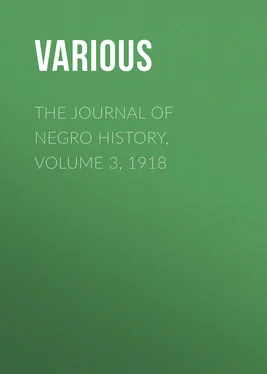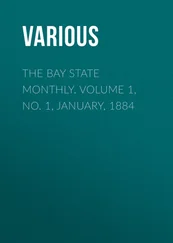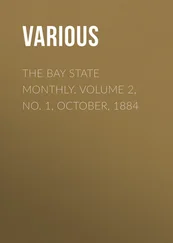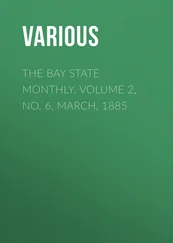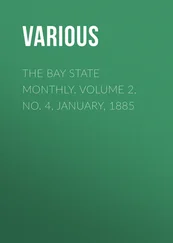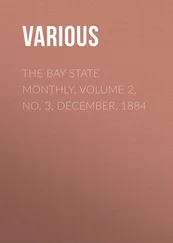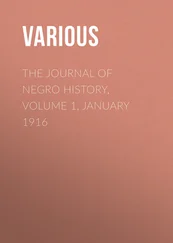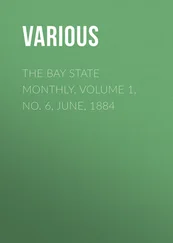Various - The Journal of Negro History, Volume 3, 1918
Здесь есть возможность читать онлайн «Various - The Journal of Negro History, Volume 3, 1918» — ознакомительный отрывок электронной книги совершенно бесплатно, а после прочтения отрывка купить полную версию. В некоторых случаях можно слушать аудио, скачать через торрент в формате fb2 и присутствует краткое содержание. Жанр: foreign_antique, periodic, История, foreign_edu, на английском языке. Описание произведения, (предисловие) а так же отзывы посетителей доступны на портале библиотеки ЛибКат.
- Название:The Journal of Negro History, Volume 3, 1918
- Автор:
- Жанр:
- Год:неизвестен
- ISBN:нет данных
- Рейтинг книги:5 / 5. Голосов: 1
-
Избранное:Добавить в избранное
- Отзывы:
-
Ваша оценка:
- 100
- 1
- 2
- 3
- 4
- 5
The Journal of Negro History, Volume 3, 1918: краткое содержание, описание и аннотация
Предлагаем к чтению аннотацию, описание, краткое содержание или предисловие (зависит от того, что написал сам автор книги «The Journal of Negro History, Volume 3, 1918»). Если вы не нашли необходимую информацию о книге — напишите в комментариях, мы постараемся отыскать её.
The Journal of Negro History, Volume 3, 1918 — читать онлайн ознакомительный отрывок
Ниже представлен текст книги, разбитый по страницам. Система сохранения места последней прочитанной страницы, позволяет с удобством читать онлайн бесплатно книгу «The Journal of Negro History, Volume 3, 1918», без необходимости каждый раз заново искать на чём Вы остановились. Поставьте закладку, и сможете в любой момент перейти на страницу, на которой закончили чтение.
Интервал:
Закладка:
Spain did not especially bother about Negro slavery in her Pacific coast territory for nearly two hundred years before the coming of the Americans. She promised by the treaty of September 30, 1817, to abolish the slave trade October 31, 1820, in all Spanish territory. In 1821, however, certain of the northern colonies of Spain in America established their independence as the United States of Mexico.[5] Three years later the importation of slaves from foreign countries was prohibited and children of slave parents were declared free. Notwithstanding this there set in considerable emigration from the Southern States followed by an agitation for the acquisition of Texas. In 1827, therefore, Coahuila and Texas were organized as a State with a law prohibiting slavery. As this, however, did not check the immigration, President Guerro issued a decree 20in 1829 abolishing slavery in Mexico on the occasion of the celebration of the independence of Mexico and in 1830 ordered a military occupation of the State to enforce the anti-slavery measure.[4] But the aggressive southerner ever endeavoring to extend the territory of slavery had all but won the day in Texas. In 1836 Texas declared itself a republic with a constitution permitting the introduction of slavery and forbidding the residence of free Negroes without the consent of its Congress. Then came the Mexican War resulting in the defeat of Mexico and the cession to the United States of a vast territory of which California was the most valuable part.
It is clear, therefore, that at the time the United States government acquired the territory of California from Mexico, slavery had been abolished there nearly twenty years. The pro-slavery party, however, did not consider this action of Mexico a finality in the settlement of the slavery question in the new possessions. When a bill providing for the purchase of this territory was laid before the house, David Wilmot, of Pennsylvania, after consultation with other northern democrats, offered the following amendment:
"Provided that an express and fundamental condition to the acquisition of any territory from the republic of Mexico by the United States, by virtue of any treaty which may be negotiated between them, and to the use by the executive of the moneys herein appropriated, neither slavery nor involuntary servitude shall ever exist in any part of said territory, except for crime whereof the party shall first be duly convicted." 21
This proviso was adopted by a vote of 83 to 64. The bill carrying this proviso was then reported to the Senate where followed a heated debate which lasted until adjournment, the proviso being killed in the midst of stormy scenes in Congress. 22This discussion showed that few statesmen believed that slavery would be profitable in California. They were not unlike Daniel Webster who, while speaking on the admission of the State of Texas, said that slavery was effectually excluded from California and New Mexico by a law even superior to that which admits and sanctions it in Texas. He meant the law of nature. The physiographic conditions of the country would forever exclude African slavery there; and it needed not the application of a proviso. If the question was then before the Senate he would not vote "to add a prohibition—to reaffirm an ordinance of nature, nor reenact the will of God." 23
The coming and going of the Negro in California did not especially interest any one until the beginning of the immigration of the forties. The subject of slavery in California was officially called to the attention of the inhabitants through the issuance of a proclamation by the Commander in Chief of the District in regard to the unlawful enslaving of the Indians. He was endeavoring to protect them, but they were enslaved 24in spite of his efforts. The legislature undertook to perpetuate this system by enacting a law permitting the enslavement of Indians, the only condition upon the master being a bond of a small sum, that he would not abuse or cruelly treat the slaves. Under the provision of the same law, Indians could be arrested as vagrants and sold to the highest bidder within twenty-four hours after the arrest, and the buyer had the privilege of the labor for a period not exceeding four months. 25An Indian arrested for a violation of a law could demand a jury trial, but could not testify in his own behalf against a white person. If found guilty of any crime, he could either be imprisoned or whipped, the whipping not to exceed twenty-four lashes. 26
Later there was a steady influx of southerners and their Negro slaves into the territory of California, after the country was taken over by the United States. Then came the question as to the enslavement of the Negro. The situation became serious after the Congress of the United States appropriated three millions of dollars for the purchase of the new territory, and still more so after gold was discovered there. Mexican rule ended with the cession of the territory to the United States; and yet session after session of Congress adjourned without giving California a territorial form of government. The question of slavery in the newly acquired territory divided Congress so that they could not decide the issue. Southern newspapers were advertising for slave-owners to send names and the number of slaves they were taking to California to found a New Colony . 27
The settlers were divided. Some came because they either disliked slavery, or were too poor to own slaves. They recognized the possibilities for making California a free State and did not care to be designated Poor White Trash by masters who were being allowed to fill the State with Negro slaves to constitute the basis of an aristocracy like that in the South. There were other inhabitants in California at the time who, being slave-owners, were southern sympathizers. They were determined either to have slavery in California or make a desperate effort before seeing the territory given up as a free State. 28It did not require very much investigation, however, to show that the pro-slavery party was in the minority. The editor of the Californian said in May, 1848, that he voiced the sentiments of the people in California in saying that slavery was neither needed nor desired there. A correspondent of this paper hoping to hold that section for free labor said: "If white labor is too high for agriculture, laborers on contract may be brought from China." Referring to the proposal to make the commonwealth a slave State Buckelew said: "We have not heard one of our acquaintance in this country advocate this measure and we are almost certain that 97-100 of the present population are opposed to it." Again it is remarked in this paper: "We left the slave states because we did not like to bring up a family in a miserable, can't-help-one's-self condition," and dearly as he loved the union, he would prefer California independent to seeing her a slave State. 29
The lack of law and order and fear of the southern slave-owners with their herds of Negro slaves finally led to the call of the Constitutional Convention. The question of slavery there was not so much debated in that body as was expected. Some excited pro-slavery leaders were talking of an independent Pacific Republic . The southern faction in the convention was led by a Mr. Gwyn, who afterwards became a United States Senator from California, and the northern element was ably represented by a Mr. Broderick, who later was chosen State Senator. 30The convention finally drafted their constitution with a section which provided that "neither slavery nor involuntary servitude unless for the punishment of crime shall ever be tolerated in this state."
The pro-slavery faction in the convention was determined to have slavery somewhere and had managed to have the eastern boundary of California so designated that it extended as far as the Rocky Mountains. This would have resulted in rejection by Congress, or a division of the territory into a Northern and a Southern California, giving the pro-slavery element a new State. The unwieldy boundary, however, was discovered in time to have it changed, but not until after much debate, which almost wrecked the constitution. The California representatives elected by the convention left for Washington, where they presented to Congress the constitution and the petition of the California settlers asking for admission as a State. There had never been a precedent for their act. Yet the settlers in California felt perfectly justified, since it was their only safeguard against the pro-slavery leaders who were bringing their slaves into the territory.
Читать дальшеИнтервал:
Закладка:
Похожие книги на «The Journal of Negro History, Volume 3, 1918»
Представляем Вашему вниманию похожие книги на «The Journal of Negro History, Volume 3, 1918» списком для выбора. Мы отобрали схожую по названию и смыслу литературу в надежде предоставить читателям больше вариантов отыскать новые, интересные, ещё непрочитанные произведения.
Обсуждение, отзывы о книге «The Journal of Negro History, Volume 3, 1918» и просто собственные мнения читателей. Оставьте ваши комментарии, напишите, что Вы думаете о произведении, его смысле или главных героях. Укажите что конкретно понравилось, а что нет, и почему Вы так считаете.
